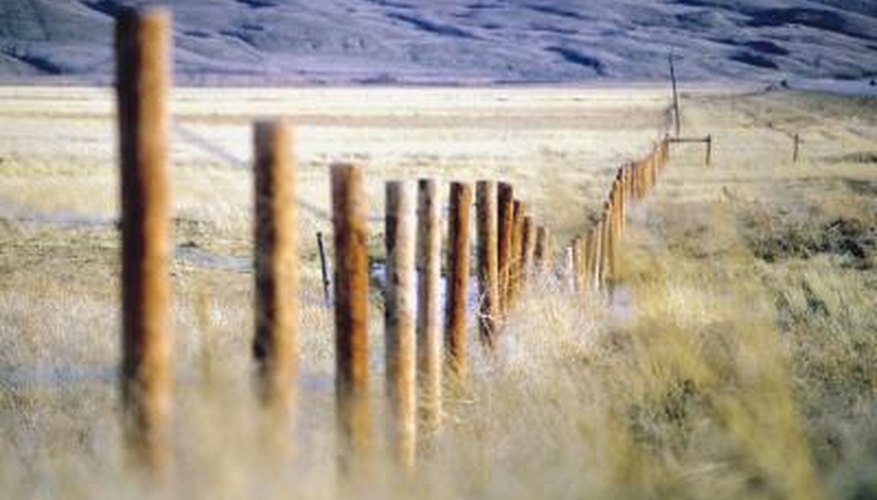Posts are to a fence what the bones of a skeleton are to a human body. They support the panels, or horizontal runners of the fence, which in turn support the pickets. Getting your fence posts properly installed is the essential first step to a quality fence installation. The tools required are specific to each phase, and some are more material than "tool," such as wooden stakes and string and lumber bracing.
Layout
Start with a pair of wooden stakes and a 3-pound hammer. Use these to indicate the corners of your fence row by driving one into the ground at each corner position. Mason's twine is then tied between the stakes to indicate a straight line for post placement. A laser level can also be used, positioned at one corner post placement and aimed down in line to hit the stake at the opposite end.
- Start with a pair of wooden stakes and a 3-pound hammer.
- Use these to indicate the corners of your fence row by driving one into the ground at each corner position.
Spacing
A long contractor's tape measure is the best tool for spacing your posts along the string, or laser line. Typically, posts are spaced every 8 feet; more than this will cause the fence to be weak. Measure along the string and wrap a piece of tape every 8 feet. If using a laser level, stretch the tape along the ground with the beam of the laser running down its centre and drive in a stake every 8 feet so that the inside face is aligned to the beam of the laser.
- A long contractor's tape measure is the best tool for spacing your posts along the string, or laser line.
Hole Placement
Use a plumb bob on a string to locate the position of each post hole if you are using a string to lay out the posts by dangling it from the mason's twine at each tape marker. Use a post hole digger to create the holes, just to one side of the string line, or with the inside edge of the hole just past the laser line. Make the holes at least 24 inches deep and 10 to 12 inches across. Cut them with the sides as straight as possible to help align the posts in their upright position.
- Use a plumb bob on a string to locate the position of each post hole if you are using a string to lay out the posts by dangling it from the mason's twine at each tape marker.
Face Adjustment
Set each post in its hole with the inside face square to and almost touching the string, or with the face just off the laser line. Drive in a wooden stake behind each post and screw a short piece of 1-by-2 lumber from the post to the stake to keep it in the correct position. Use a tape measure to measure from the line to each corner of the post to ensure it is square to the line. Twist the post as needed. The stake and brace can be adjusted slightly just by turning the post.
- Set each post in its hole with the inside face square to and almost touching the string, or with the face just off the laser line.
- Use a tape measure to measure from the line to each corner of the post to ensure it is square to the line.
Levelling
Use a post level to check the post for plumb. These levels have indicator vials on two faces and fit onto the corner of the post with a large rubber band. Adjust the post until it is level, front to back and side to side. If you are using a laser level, set it either on top of the post or at the base and adjust it until it aligns to the laser beam. One alternate method is to drive a screw into the post and hang a plumb bob from it. Adjust the post until the bob's string is spaced evenly along its length from the post face.
- Use a post level to check the post for plumb.
- One alternate method is to drive a screw into the post and hang a plumb bob from it.
